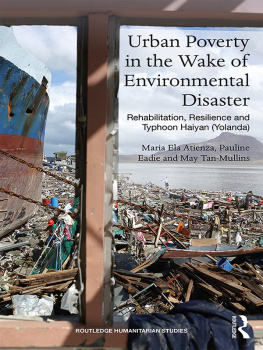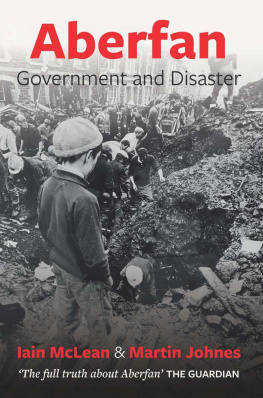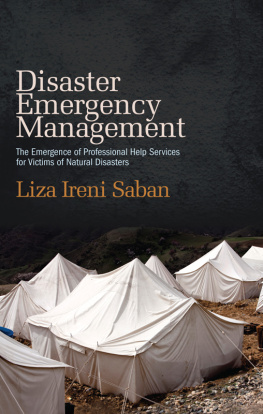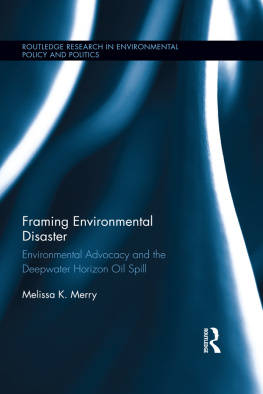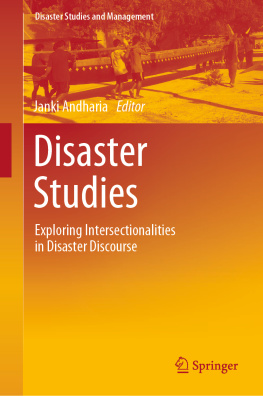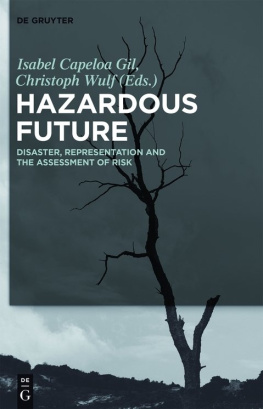
Indonesia and the Politics of Disaster
Named after Lapindo Brantas, a gas exploration company that was drilling at the eruption site, the Lapindo mudflow initially burst in 2006 and continues to flow today, becoming the most expensive disaster in Indonesias history.
Using this environmental incident in Indonesia as a case study, this book explores representations of disaster in scientific reports, public discourse, literature, and other cultural forms, observing the impact of these portrayals on the ways people both understand and respond to complicated environmental disasters. The author argues that power is expressed and contested in every representation of a disaster and its stakeholders. This book develops terminologies and perspectives that not only probe the social and ecological conditions that make disaster possible but also foster more effective and equitable strategies for adapting to a world fraught with hazards.
Interdisciplinary in nature, this book makes a significant contribution to the fields of green cultural studies, disaster studies, science and technology studies and studies of political ecology in Southeast Asia.
Phillip Drake is Assistant Professor of English at the University of Kansas, USA. His teaching and research focuses on environmental literature and rhetoric, science and technology studies, Marxism, animal studies, and environmental politics.
Routledge Contemporary Southeast Asia Series
For a full list of titles in this series, please visit www.routledge.com
75Social Democracy in East Timor
Rebecca Strating
76The Politics of Aid to Myanmar
A humanitarian struggle on the Thai-Burmese border
Anne Dcobert
77Animism in Southeast Asia
Edited by Kaj rhem and Guido Sprenger
78Brunei History, Islam, Society and Contemporary Issues
Edited by Ooi Keat Gin
79Political Institutions in East Timor
Semi-presidentialism and democratisation
Lydia M. Beuman
80Religious Violence and Conciliation in Indonesia
Christians and Muslims in the Moluccas
Sumanto Al Qurtuby
81Identity Politics and Elections in Malaysia and Indonesia
Ethnic engineering in Borneo
Karolina Prasad
82Rethinking Power Relations in Indonesia
Transforming the margins
Edited by Michaela Haug, Martin Rssler and Anna-Teresa Grumblies
83Indonesia and the Politics of Disaster
Power and representation in Indonesias mud volcano
Phillip Drake
Indonesia and the Politics of Disaster
Power and representation in Indonesias mud volcano
Phillip Drake
First published 2017
by Routledge
2 Park Square, Milton Park, Abingdon, Oxon OX14 4RN
and by Routledge
711 Third Avenue, New York, NY 10017
Routledge is an imprint of the Taylor & Francis Group, an informa business
2017 Phillip Drake
The right of Phillip Drake to be identified as author of this work has been asserted by him in accordance with sections 77 and 78 of the Copyright, Designs and Patents Act 1988.
All rights reserved. No part of this book may be reprinted or reproduced or utilised in any form or by any electronic, mechanical, or other means, now known or hereafter invented, including photocopying and recording, or in any information storage or retrieval system, without permission in writing from the publishers.
Trademark notice: Product or corporate names may be trademarks or registered trademarks, and are used only for identification and explanation without intent to infringe.
British Library Cataloguing in Publication Data
A catalogue record for this book is available from the British Library
Library of Congress Cataloging-in-Publication Data
Names: Drake, Phillip, author.
Title: Indonesia and the politics of disaster : power and representation
in Indonesias mud volcano / Phillip Drake.
Description: New York : Routledge, 2016. | Series: Routledge
contemporary Southeast Asia series ; 83 | Includes bibliographical
references and index.
Identifiers: LCCN 2016009833 | ISBN 9781138696204 (hardback) |
ISBN 9781315525136 (ebook)
Subjects: LCSH: MudflowsSocial aspectsIndonesiaSidoarjo. |
Emergency managementPolitical aspectsIndonesiaSidoarjo. |
Disaster reliefPolitical aspectsIndonesiaSidoarjo. | Gas well
drillingEnvironmental aspectsIndonesiaSidoarjo. | Communication
in the environmental sciencesIndonesia. | Lapindo Brantas, PT.
Classification: LCC HV613 2006.S53 D73 2016 | DDC 363.11/
92233850959828dc23
LC record available at http://lccn.loc.gov/2016009833
ISBN: 978-1-138-69620-4 (hbk)
ISBN: 978-1-315-52513-6 (ebk)
Typeset in Times New Roman
by Apex CoVantage, LLC
Contents
There is something sublime about a mud volcano, something terrifying an alluring horror that drew me to this project after first hearing about the spreading mud in autumn of 2006. In an attempt to move beyond these disquieting affects, Indonesia and the Politics of Disaster soberly considers the social and geophysical dynamics that determine the emergence of the mud volcano as a transformative force in Indonesia. Despite the mud volcanos spectacular features, this book is about people, stories, environments, and power, all of which became entangled to shape both understandings of the disaster and the ways it unfolded.
I received financial support for this research from a Fulbright grant, the University of Chicago Center for International Studies, and a travel grant from the University of Kansas College of Liberal Arts and Sciences. All findings and analyses are my own and do not reflect the opinions of other individuals or institutions.
I appreciate the permissions granted to reprint revised versions or excerpted portions of the following articles: Multiple Visions of Indonesias Mud Volcano: Understanding Representations of Disaster across Discursive Settings, Disasters (2015); Under the Mud Volcano: Indonesias Mudflow Victims and the Politics of Testimony, Indonesia and the Malay World 41:121 (2013): 299321; and The Goat that Couldnt Stop the Mud Volcano: Animal Sacrifice, Subjectivity, and East Javas Mud Volcano, Humanimalia 4:1 (2012).
Indonesia and the Politics of Disaster would not have advanced without the generous support of teachers, colleagues, students, friends, and family. At the University of Hawaii, I am particularly grateful to John Rieder, my dissertation chair, for his support and extensive comments over the years. I will always admire the adventurousness and precision of his thinking. I worked with many inspiring teachers at UH, including Laura Lyons, John Zuern, Ehito Kimura, and Kieko Matteson, each of whom saw early drafts of sections of this project, but also Barbara Andaya, Cindy Franklin, Cristina Bacchilega, and S. Charusheela.
In addition, I am grateful to Mark Lycett at the University of Chicago for supporting my research and fostering an amazing community for intellectual exchange through the Program on the Global Environment. Dean Clason and Madeleine McLeester also provided much needed assistance and patience. I also want to thank all my colleagues in the English Department at the University of Kansas for their embrace of the green humanities. In particular, conversations with Anna Neill, Byron Caminero-Santangelo, and Paul Outka inspired new ideas and invigorated me as this project moved into its final stages.


